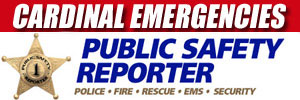Understanding the different types of fires and how to extinguish them is firefighting 101. In fact, even some experienced firefighters need a refresher from time to time. Below we’ll break down the different fire classes and how to handle them properly.
Class A Fire
One of the first fires you’ll learn about is a Class A fire for a couple of reasons. First, it’s the most basic fire because it involves everyday materials like paper, plastic, wood, and trash. Additionally, because the fire involves standard materials, Class A is the simplest fire to extinguish––with water. Generally speaking, a Class A fire is the only type of fire you can extinguish with water.
Class B Fire
Industrial complexes, such as manufacturing facilities or petroleum yards, are prone to Class B fires, which involve combustible liquids or gases such as paint, oils, gasoline, and kerosene. The only way to extinguish a Class B fire is by smothering to block oxygen with a fire extinguisher. Firefighters carry a special foam (AFFF or Aqueous Film Forming Foams) that is added to water. If your not a firefighter, which means you don’t have a large water supply, don’t use water on a Class B fire. Water can spread combustible liquid that is burning, which could make the fire worse by spreading the fire to other objects that might ignite.
Class C Fire
With more and more technology entering our homes, Class C fires have seen a spike in recent years. A Class C fire is better known as an electrical fire. The causes for these fires are nearly endless but most involve a faulty wire, overloading a circuit, or outdated appliances. The first step to putting out a Class C fire is eliminating the power source by either unplugging the power cord or shutting off the breaker. From there, you can use the appropriate fire extinguisher to handle the job.
Class D Fire
A Class D fire is the most unusual fire class because it involves flammable metals. It’s most common to see a Class D fire in places like laboratories, metal recycling plants, or metal manufacturing plants. Magnesium wheels, while burning, will flare up when hit with water. Much like a Class B fire, water will only make matters worse, so you must use a dry powder agent instead, which can also be found in Class D-rated fire extinguishers.
Class K Fire
A kitchen (or Class K) fire is one of the most common causes of residential fires. Several factors can cause a Class K fire such as grease, olive oil, and fats. It’s important to note that cooking fires don’t need an open flame to spark, they merely need a heat source. That said, Class K fires can occur on the stovetop, in the oven, and even in a microwave or other small appliances. Moreover, you should always shut off the power source: unplug the microwave, turn off the oven, and deactivate the pilot light. If the fire is small and contained, you might be able to extinguish the fire by throwing baking soda on the flame. Although, for best results, you should always use a Class K-graded fire extinguisher.
Note: These a classes of fires for the United States. Other countries may use other letters for the variety of classes of fires.
Whether your a firefighter or a homeowner or employee that is responsible for fire safety at home or at work, you’ll want to be prepared with reliable fire equipment store. It’s worth taking a look at fire equipment stores to check to see if you might want more than a fire extinguisher. Personal Protection Equipment, such as fire-resistant gloves and specialized tools might be appropriate for some work, home, and automotive environments.
facebook …
GET ALERTS on Facebook.com/CardinalEmergencies
GET ALERTS on Facebook.com/ArlingtonCardinal
Stay informed with news from PublicSafetyReporter.com’s Emergencies Behind the Scenes Facebook page — Facebook.com/CardinalEmergencies.

